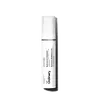What's inside
What's inside
 Key Ingredients
Key Ingredients

 Benefits
Benefits

 Concerns
Concerns

 Ingredients Side-by-side
Ingredients Side-by-side

Water
Skin ConditioningIsononyl Isononanoate
EmollientEthylhexyl Palmitate
EmollientPolyglyceryl-10 Distearate
EmulsifyingPrunus Amygdalus Dulcis Oil
Skin ConditioningPolysorbate 20
EmulsifyingDicaprylyl Maleate
EmollientPolymethyl Methacrylate
Polyacrylate-13
Castor Isostearate Succinate
Skin ConditioningMaltooligosyl Glucoside
Skin ConditioningVegetable Oil
Skin ConditioningIsopropyl Myristate
EmollientRetinol
Skin ConditioningCucumis Melo Fruit Extract
Skin ConditioningTocopherol
AntioxidantAscorbyl Methylsilanol Pectinate
AntioxidantHydrogenated Vegetable Oil
EmollientHippophae Rhamnoides Oil
EmollientElaeis Guineensis Oil
EmollientOrchid Leaf/Root/Stem Extract
Skin ConditioningOlivine Extract
Skin ConditioningSoluble Collagen
HumectantC14-22 Alcohols
Emulsion StabilisingJojoba Alcohol
EmollientPotassium Jojobate
Skin ConditioningPolyisobutene
Butylene Glycol
HumectantHydrogenated Starch Hydrolysate
HumectantMagnesium Aluminum Silicate
AbsorbentPalmitoyl Proline
Skin ConditioningPalmitic Acid
EmollientEthylene Brassylate
MaskingC12-20 Alkyl Glucoside
EmulsifyingHexapeptide-9
Skin ConditioningHexylene Glycol
EmulsifyingEthylhexylglycerin
Skin ConditioningSodium Palmitoyl Sarcosinate
CleansingMagnesium Palmitoyl Glutamate
Skin ConditioningDecarboxy Carnosine Hcl
Skin ConditioningDisodium EDTA
BHT
AntioxidantBHA
AntioxidantTocotrienols
Skin ConditioningTetrasodium EDTA
Benzoic Acid
MaskingPhenoxyethanol
PreservativeCaprylyl Glycol
EmollientParfum
MaskingCitrus Aurantium Dulcis Peel Oil
MaskingCI 16035
Cosmetic ColorantWater, Isononyl Isononanoate, Ethylhexyl Palmitate, Polyglyceryl-10 Distearate, Prunus Amygdalus Dulcis Oil, Polysorbate 20, Dicaprylyl Maleate, Polymethyl Methacrylate, Polyacrylate-13, Castor Isostearate Succinate, Maltooligosyl Glucoside, Vegetable Oil, Isopropyl Myristate, Retinol, Cucumis Melo Fruit Extract, Tocopherol, Ascorbyl Methylsilanol Pectinate, Hydrogenated Vegetable Oil, Hippophae Rhamnoides Oil, Elaeis Guineensis Oil, Orchid Leaf/Root/Stem Extract, Olivine Extract, Soluble Collagen, C14-22 Alcohols, Jojoba Alcohol, Potassium Jojobate, Polyisobutene, Butylene Glycol, Hydrogenated Starch Hydrolysate, Magnesium Aluminum Silicate, Palmitoyl Proline, Palmitic Acid, Ethylene Brassylate, C12-20 Alkyl Glucoside, Hexapeptide-9, Hexylene Glycol, Ethylhexylglycerin, Sodium Palmitoyl Sarcosinate, Magnesium Palmitoyl Glutamate, Decarboxy Carnosine Hcl, Disodium EDTA, BHT, BHA, Tocotrienols, Tetrasodium EDTA, Benzoic Acid, Phenoxyethanol, Caprylyl Glycol, Parfum, Citrus Aurantium Dulcis Peel Oil, CI 16035
Water
Skin ConditioningCoco-Caprylate/Caprate
EmollientPropanediol
SolventPentylene Glycol
Skin ConditioningHydroxyapatite
AbrasiveRetinal
Skin ConditioningCetylhydroxyproline Palmitamide
Skin Conditioning4-T-Butylcyclohexanol
MaskingHydroxyphenyl Propamidobenzoic Acid
Skin ConditioningErgothioneine
AntioxidantBiosaccharide Gum-1
HumectantBisabolol
MaskingBrassica Campestris Sterols
EmollientZingiber Officinale Root Extract
MaskingButylene Glycol
HumectantIsohexadecane
EmollientHexyldecanol
EmollientMaltodextrin
AbsorbentCaesalpinia Spinosa Gum
Skin ConditioningPolyacrylate Crosspolymer-6
Emulsion StabilisingHydroxyethyl Acrylate/Sodium Acryloyldimethyl Taurate Copolymer
Emulsion StabilisingStearic Acid
CleansingIsoceteth-20
EmulsifyingPolysorbate 60
EmulsifyingAscorbyl Palmitate
AntioxidantTocopherol
AntioxidantLactic Acid
BufferingSodium Lactate
BufferingSodium Hydroxide
BufferingEthylhexylglycerin
Skin ConditioningPhenoxyethanol
PreservativeChlorphenesin
AntimicrobialWater, Coco-Caprylate/Caprate, Propanediol, Pentylene Glycol, Hydroxyapatite, Retinal, Cetylhydroxyproline Palmitamide, 4-T-Butylcyclohexanol, Hydroxyphenyl Propamidobenzoic Acid, Ergothioneine, Biosaccharide Gum-1, Bisabolol, Brassica Campestris Sterols, Zingiber Officinale Root Extract, Butylene Glycol, Isohexadecane, Hexyldecanol, Maltodextrin, Caesalpinia Spinosa Gum, Polyacrylate Crosspolymer-6, Hydroxyethyl Acrylate/Sodium Acryloyldimethyl Taurate Copolymer, Stearic Acid, Isoceteth-20, Polysorbate 60, Ascorbyl Palmitate, Tocopherol, Lactic Acid, Sodium Lactate, Sodium Hydroxide, Ethylhexylglycerin, Phenoxyethanol, Chlorphenesin
 Reviews
Reviews

Ingredients Explained
These ingredients are found in both products.
Ingredients higher up in an ingredient list are typically present in a larger amount.
Butylene Glycol (or BG) is used within cosmetic products for a few different reasons:
Overall, Butylene Glycol is a safe and well-rounded ingredient that works well with other ingredients.
Though this ingredient works well with most skin types, some people with sensitive skin may experience a reaction such as allergic rashes, closed comedones, or itchiness.
Learn more about Butylene GlycolEthylhexylglycerin (we can't pronounce this either) is commonly used as a preservative and skin softener. It is derived from glyceryl.
You might see Ethylhexylglycerin often paired with other preservatives such as phenoxyethanol. Ethylhexylglycerin has been found to increase the effectiveness of these other preservatives.
Phenoxyethanol is a preservative that has germicide, antimicrobial, and aromatic properties. Studies show that phenoxyethanol can prevent microbial growth. By itself, it has a scent that is similar to that of a rose.
It's often used in formulations along with Caprylyl Glycol to preserve the shelf life of products.
Tocopherol (also known as Vitamin E) is a common antioxidant used to help protect the skin from free-radicals and strengthen the skin barrier. It's also fat soluble - this means our skin is great at absorbing it.
Vitamin E also helps keep your natural skin lipids healthy. Your lipid skin barrier naturally consists of lipids, ceramides, and fatty acids. Vitamin E offers extra protection for your skin’s lipid barrier, keeping your skin healthy and nourished.
Another benefit is a bit of UV protection. Vitamin E helps reduce the damage caused by UVB rays. (It should not replace your sunscreen). Combining it with Vitamin C can decrease sunburned cells and hyperpigmentation after UV exposure.
You might have noticed Vitamin E + C often paired together. This is because it is great at stabilizing Vitamin C. Using the two together helps increase the effectiveness of both ingredients.
There are often claims that Vitamin E can reduce/prevent scarring, but these claims haven't been confirmed by scientific research.
Learn more about TocopherolWater. It's the most common cosmetic ingredient of all. You'll usually see it at the top of ingredient lists, meaning that it makes up the largest part of the product.
So why is it so popular? Water most often acts as a solvent - this means that it helps dissolve other ingredients into the formulation.
You'll also recognize water as that liquid we all need to stay alive. If you see this, drink a glass of water. Stay hydrated!
Learn more about Water